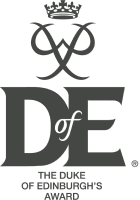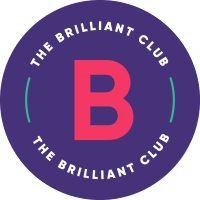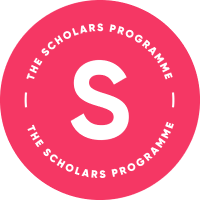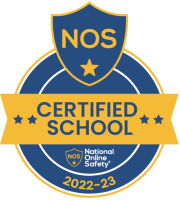This subject is part of the Faculty of Arts and Creative Technologies
Our Head of Faculty is
Mr R Down rdown@tcat.school
Our subject teachers and emails are
Mrs L Gwilliam lgwilliam@tcat.school
Our subject intent is
Is to encourage our students to develop their abilities and skills in all aspects of art, as well as experiment with new materials which may lead to them discovering previously hidden talents!
We are fortunate to have two large well equipped art rooms, a small suite of computers and a small darkroom which enable us to deliver a broad range of techniques and experiences.
Our aims are:
- To help each student irrespective of ability to reach their full potential.
- To develop students’ capacity to learn about and observe the world in which they live.
- To enable students to communicate ideas using written, visual or verbal language and to use a range of materials with confidence.
- To develop students’ ability to value the contribution made by artists, craft workers and designers and to respond thoughtfully, critically and imaginatively to ideas, images and objects of many kinds and from many cultures.
- To provide a stimulating visual environment for students to work in.
We offer a range of approaches and disciplines within the department over the key stages, these include:
- Painting and Drawing using a variety of different media
- Printmaking – including silk screen printing, lino printing and etching/collographs
- 3D using wire, papier mache, and clay and plaster of paris
- Digital media and Photography.
Curriculum Subject Offer
Year 7 Art
Subject intent:
The art and design curriculum offered at KS3 addresses the formal elements of art and design and is intended to develop pupils’ confidence, competence, imagination and creativity. The KS3 curriculum enables pupils to develop skills in drawing, painting, printmaking, sculpture, surface pattern and image manipulation using ICT. Pupils are given the opportunity to work with a range of materials to produce both two-dimensional and three-dimensional pieces of work.
These are the essential skills and processes in art, craft and design that pupils need to learn to make progress.
In Year 7 pupils complete a course designed to cover the basic skills in art and design, the aim being to fill any gaps in knowledge or experience. They look at observational drawing skills such as the use of line, tone, texture, shape and form. They also look at the use of colour and colour theory. These skills are used to introduce a range of media that can then be utilised for future projects.
Topic Breakdown
| Module 1 |
Module 2 |
| Drawing – Accurate drawing and applying tone and detail in drawings.
Mark Making – Being creative about applying a greater range of mark making when drawing. Colour Theory – Understanding the basic colour groups and how to mix colours. Develop skills using paint. |
Mask Making Project – Develop 3D skills through creating a papier mache mask. Explore the art and traditions of other cultures.
Landscape Project – explore the techniques of artists on the theme of Landscape. Investigate different media. |
You will be assessed at various points during the module when key pieces of work are done and at the end of the module when practical projects are completed. An independent study task will give you the opportunity to extend your knowledge and will also be assessed.
Art full Scheme of Work - Year 7
Year 8 Art
Subject intent
The art and design curriculum offered at KS3 addresses the formal elements of art and design and is intended to develop pupils’ confidence, competence, imagination and creativity. The Year 8 curriculum enables pupils to develop the skills that they have looked at in Year 7 and explore how to implement these in a range of creative projects. Pupils are given the opportunity to work with a variety of materials to produce both two-dimensional and three-dimensional pieces of work.
These are the essential skills and processes in art, craft and design that pupils need to learn to make progress.
In year 7 pupils completed a series of projects designed to revisit and reaffirm the basic skills that form the foundation of all work in this subject
During Year 8 we focus on view points. Pupils begin with looking at perspective theory and how artists have used this to create an illusion of depth in art. We then go on to look at how perspective can be twisted and changed through art looking in particular at the art of Patrick Hughes and Cubism. The second module focuses more on exploring media and experimenting with techniques as pupils investigate the work of children’s book illustrators and the decorative work of Gaudi
Topic Breakdown
|
Module 1 |
Module 2 |
| Viewpoints – Perspective Basics. Understanding how to use the rules of perspective to depict Three dimensional images in drawings (one-point perspective, two-point perspective and implementing perspective in drawing).
Viewpoints – Imaginative Perspective. Exploring how you can use perspective techniques to create more imaginative images and think more creatively about viewpoints. Patrick Hughes Project – Look in detail at the work of an artist who specialises in imaginative use of perspective and use this work as inspiration for an imaginative piece. |
Illustration Project – Explore how illustrators interpret text and create imaginative images to accompany it. Experimenting with a range of media in development of ideas for their own illustration.
Gaudi Project – Investigate the work of Gaudi and use this as inspiration for a card/paper based decorative sculpture. |
You will be assessed at various points during the module when key pieces of work are done and at the end of the module when practical projects are completed. An independent study task will give you the opportunity to extend your knowledge and will also be assessed.
Art full Scheme of Work - Year 8
Year 9 Art
Subject intent:
The art and design curriculum offered at this stage of KS3 builds on the formal elements of art and design covered in Years 7 and 8 and is intended to further develop pupils’ confidence, competence, imagination and creativity in preparation for GCSE Art and Design courses. The Year 9 curriculum enables pupils to develop the skills that they have looked at previously and provides an opportunity for students to demonstrate their knowledge in a range of creative projects. Pupils are given the opportunity to work with a variety of materials, both in refining previous skills and developing new ones.
These are the essential skills and processes in art, craft and design that pupils need to learn to make progress.
In year 8 pupils built on the foundation skills they developed in Year 7 and then looked at how they could further apply these through their study of perspective and visual language.
During year 9 work looks at furthering pupil experiences in art and developing their use of media. Pupils revisit observational drawing skills through looking at natural form using a wide range of media. This work is further developed through a lino printing project. Students also look at more contemporary/pop art influences and use this research as a starting point for developing independent art work.
Topic Breakdown
|
Module 1 |
Module 2 |
| Insect Project – Drawing Skills. Developing drawing and media skills further. Opportunity to revisit observational drawing skills and practice use of a range of media (building on techniques used earlier in KS3).
Insect Project – Printmaking. Creating a reduction lino print based on insect drawings – consideration of process and mark making using relief printmaking process. |
Pop Art – Intro (exploring artists). Introduce students to the Pop art movement and the way that they used popular culture as inspiration. Investigate themes and techniques of traditional and contemporary artists in this genre.
Pop Art – Popular Culture Piece. Using popular culture to inspire an art piece. Using this art piece as means to develop skills with composition and colour media. |
You will be assessed at various points during the module when key pieces of work are done and at the end of the module when practical projects are completed. An independent study task will give you the opportunity to extend your knowledge and will also be assessed.
Art full Scheme of Work - Year 9
Year 10 Art
Subject intent:
At KS4 pupils study Art, Craft and Design with EDEXCEL (Pearson) Examination board.
Through this course pupils are encouraged to develop their personal, creative and imaginative approaches to art and design focusing on practical skills as well as integrating critical knowledge. The main aim of the course is to develop visual language skills and for students to build a comprehensive portfolio of work to progress to further courses or employment. The course allows progression from Key Stage 3 and prepares students for AS/Advanced GCE, BTEC Nationals and other art and design qualifications. The curriculum covers a range of activities and in-depth assignments allowing them to work across a variety of disciplines in the Art, Craft and Design syllabus. Students will have the opportunity to experiment with different media in order to explore strengths and preferences. At KS4, pupils adopt a much more personal approach to their work and are required to work much more independently.
During Year 10 students will complete a series of projects designed to refine and develop their practical and investigative skills. They will be given the opportunity to further master techniques studied during KS3 as well as investigating new media and approaches to creativity. In the final term they will begin the development of their main coursework project (personal portfolio). The work produced for their coursework and their terminal examination is assessed against four assessment objectives.
Topic Breakdown
|
Project 1 – Natural Form |
Pen and Ink – Daryl Feril | Colour Media – Georgia O’Keefe |
Mask Making |
| Developing drawing and media skills further. Opportunity to revisit observational drawing skills and practice use of a range of media (building on techniques used earlier in KS3). | Detailed study of work of graphic artist Feril and his use of pen ink (with natural forms). How to look at the work of an artist and use their work to develop own ideas. | Detailed study of work of artist O’Keeffe and using this as a means to explore and develop skills in using colour media (acrylic and watercolour paint and oil and chalk pastels).
How to look at the work of an artist and use their work to develop own ideas. |
Introduction of design briefs, research and mood boards, preparatory sketches and creating an original design.
Opportunity to develop 3 dimensional skills and the use of Modroc. |
You will be assessed at various points during the course when key pieces of work are done and at the end of the module when practical projects are completed.
Art full Scheme of Work - Year 10
Year 11 Art
Subject intent:
At KS4 pupils study Art, Craft and Design with EDEXCEL (Pearson) Examination board.
Through this course pupils are encouraged to develop their personal, creative and imaginative approaches to art and design focusing on practical skills as well as integrating critical knowledge. The main aim of the course is to develop visual language skills and for students to build a comprehensive portfolio of work to progress to further courses or employment. The course allows progression from Key Stage 3 and prepares students for AS/Advanced GCE, BTEC Nationals and other art and design qualifications. The curriculum covers a range of activities and in-depth assignments allowing them to work across a variety of disciplines in the Art, Craft and Design syllabus. Students will have the opportunity to experiment with different media in order to explore strengths and preferences. At KS4, pupils adopt a much more personal approach to their work and are required to work much more independently.
During the first half of Year 11 pupils will continue to work on their personal portfolio coursework project. They will be given the opportunity to revisit previous skills and techniques through the development of their own independent study. Their project should show progression from their initial ideas and research, through investigations and experiments with media and by reviewing and refining their work as it develops. In the second half of the year they will complete their Externally Set Assignment (ESA – theme set by exam board). The work produced for their coursework and their terminal examination is assessed against four assessment objectives.
AO1 – Develop ideas through investigations, demonstrating critical understanding of sources.
AO2 – Refine work by exploring ideas, selecting and experimenting with appropriate media, materials, techniques and processes.
AO3 – Record ideas, observations and insights relevant to intentions as work progresses.
AO4 – Present a personal and meaningful response that realises intentions and demonstrates understanding of visual language.
Topic Breakdown
|
Component 1: Personal Portfolio – 60% Final Grade |
Component 2: Externally Set Assignment – 40% Final Grade |
| Developing and exploring ideas.
Researching primary and contextual sources. Experiment with media, materials, techniques and processes. Present personal response(s) to the internally-set theme. Title – Fantastic Forms. Students have the opportunity to creatively respond to the theme and develop their own project inspired by the title. |
Developing and exploring ideas.
Researching primary and contextual sources. Experiment with media, materials, techniques and processes. Present personal response(s) to the externally-set theme. Title – To be set according to January Exam paper. Students have the opportunity to creatively respond to the theme and develop their own project inspired by the title. |
You will be assessed at various points during the course when key pieces of work are done and at the end of the module when practical projects are completed.
Art full Scheme of Work - Year 11
Within each subject we have our own specific personalised marking and feeback policy.
|
Arts and Creative Technology |
||
|
|
KS3 |
KS4 |
|
Verbal dialogue |
Teachers circulate with purpose, checking pupils’ work and collecting information on whole-class strengths, skill development, errors, misconceptions, knowledge gaps etc. The teacher adjusts their lesson accordingly. |
Teachers circulate with purpose, checking pupils’ work, providing feedback if appropriate and collecting information on whole-class strengths, errors, misconceptions, knowledge gaps etc. The teacher adjusts their lesson (or SOW) accordingly. |
|
Self/peer assessment |
Verbal or written feedback through strengths/targets and annotations. If written, peer and self-assessment should be completed in blue pen. |
Verbal or written feedback through strengths/targets and annotations. If written, peer and self-assessment should be completed in blue pen. |
|
Whole Class Feedback |
When pupils complete extended pieces of work, teachers will look through a sample of work from each class they teach and note pupils’ strengths and targets. Teachers will then use this information to provide whole class feedback on what pupils are doing well and how pupils can improve their work further. As this type of marking involves the teacher looking at a sample of work, the teacher will use a rotation system to ensure that the work of all pupils is looked at on a regular basis. Where books are not used, verbal responses from pupils or video evidence can be used. |
When pupils complete extended pieces of writing, teachers will read through a sample of books from each class they teach and note pupils’ strengths and targets. Teachers will then use this information to provide whole class feedback on what pupils are doing well and how pupils can improve their work further. As this type of marking involves the teacher looking at a sample of books, the teacher will use a rotation system to ensure that the books of all pupils are looked at on a regular basis. Where books are not used, verbal responses from pupils or video evidence can be used. |
|
Written comments |
Teachers within the department will either: 1. Check through the work of all pupils and use a marking code to indicate the strengths and targets of the work. The marking code will be shared with all pupils and pupils will be given precise instruction about how to improve their work. OR 2. Read through the work of all pupils and write a strength comment and target comment at the end of the piece of work. OR 3. Record evidence of work through suitable media, providing pupils with a strength and target comment relevant to the piece of work. SPAG Teachers will identify where pupils make errors in their spelling, punctuation and grammar and pupils will be given time in lessons to make corrections (by circling errors where SPAG mistakes appear). If several pupils in a class are making the same spelling, punctuation or grammar error then the teacher will address this with the class. |
Teachers within the department will either: 1. Read through the work of all pupils and use a marking code to indicate the strengths and targets of the work. The marking code will be shared with all pupils and pupils will be given precise instruction about how to improve their work. OR 2. Read through the work of all pupils and write a strength comment and target comment at the end of the piece of work. OR 3. Record evidence of work through suitable media, providing pupils with a strength and target comment relevant to the piece of work.
SPAG Teachers will identify where pupils make errors in their spelling, punctuation and grammar and pupils will be given time in lessons to make corrections (by circling errors where SPAG mistakes appear). If several pupils in a class are making the same spelling, punctuation or grammar error then the teacher will address this with the class.
Written feedback forms part of the module feedback process in vocational courses. This is intended to be summative for that unit/module but formative toward improvement in the following unit/module. |
|
Frequency of feedback |
Live feedback and responsive teaching will take place in most lessons where pupils have been asked to complete extended pieces of work. * Whole-class feedback will take place once a week. Peer/self-assessment When deemed to be the most effective method of assessing work produced in lessons Written comments will take place after between 10 and 15 lessons (around twice per term), as appropriate for the pace of the class. OR Once per module/rotation.
|
Live feedback and responsive teaching will take place in most lessons where pupils have been asked to complete extended pieces of writing. * Whole-class feedback will take place once a week. Peer/self-assessment When deemed to be the most effective method of assessing work produced in lessons Written comments will take place after between 10 and 15 lessons (around twice per term), as appropriate for the pace of the class. There may be several lessons where pupils do not write extensively. Instead lesson time will be used to: (for example) read and discuss the musical scores; annotate the text/diagrams; make notes about the set-works; complete short comprehension activities. |
|
Response to feedback |
When directed after marking/whole class feedback, pupils will be expected to make a response in blue pen OR Make media application of their feedback in their ongoing work. In some instances, pupils will be expected to put the title DIRT and either re-draft an entire piece of work or a section of the piece of work according to the teacher’s instructions. In other instances, pupils will be expected to apply their feedback in the form of transferable skills applied in a new task. This would be done in blue pen when relevant. In further instances, pupils may be asked to answer questions posed by the teacher. Responses to spelling mistakes include writing out misspelled words such as subject specific vocabulary or key words. |
When directed after marking/whole class feedback, pupils will be expected to make a response in blue pen OR Make media application of their feedback in their ongoing work. In some instances, pupils will be expected to put the title DIRT and either re-draft an entire piece of work or a section of the piece of work according to the teacher’s instructions. In other instances, pupils will be expected to apply their feedback in the form of transferable skills applied in a new task. This would be done in blue pen when relevant. In further instances, pupils may be asked to answer questions posed by the teacher. Responses to spelling mistakes include writing out misspelled words and listening to explicit teaching of spelling (etymology etc.). |
|
Summative assessment |
1 x formal assessment each half term or module rotation. A piece of extended work which is marked using comparative judgement on the No More Marking platform. Band boundaries are applied to the assessments once judged, as stated in the SOW. |
1 x formal assessment each half term. A piece of extended writing which is marked using comparative judgement on the No More Marking platform. Band boundaries are applied to the assessments once judged. This might be a practical piece or some written work, as stated in the SOW. |






